
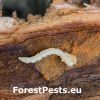
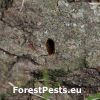
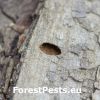
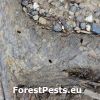
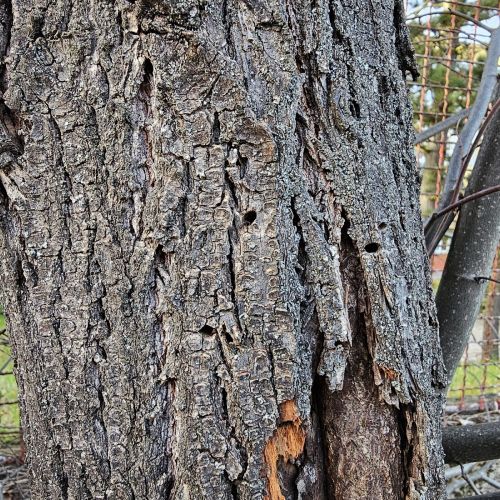 Show all photos in album
Insert for comparison
We will identify your pest
Add pictures of this species
Show all photos in album
Insert for comparison
We will identify your pest
Add pictures of this species
Lamprodila rutilans
Linden jewel beetle
Description
This species has an elongated, oval body with a size of 11-15 mm. The coloring is variable, mostly with a basic green color, changing to orange or red at the edges of the elytra and the thorax. Sometimes shades of red predominate or the basic color is blue. Elytra have scattered black spots, the size of which is also variable, or they may be missing. The whole body has a metallic sheen.
It is tied to the large-leaved linden (Tilia platyphyllos) and l. small-leaved (T. cordata), it has not yet been observed on exotic cultivars. Development usually takes two years, and takes place in the thick bark or under the bark of still-living, old, dazzled trees. Development can also take place in bare roots. The larvae pupate under or in the bark, and adults bites its way out through an elliptical exit hole. Adults are active from the end of May to June, and in sunny weather, they climb the trunks or sit on the leaves of linden trees. Currently, they find suitable habitats especially in towns and villages (alleys of linden trees, parks), where they can cause damage.
It is widespread almost throughout Europe, except for the northern parts of Scandinavia.
Symptom
Oval exit holes (approx. 5.3 x 3.3 mm), mainly on the southern, dazzled side.
Tree Species: Lime
Part of a plant- attacked: Tree trunk, Branch
Pest significance: Less harmful
Pest Category: Insects
Invasive Species: No
Present in EU: Yes
Add comment: Lamprodila rutilans
Location map: Lamprodila rutilans
print viewLegend:

Expert verified points

Unverified points







